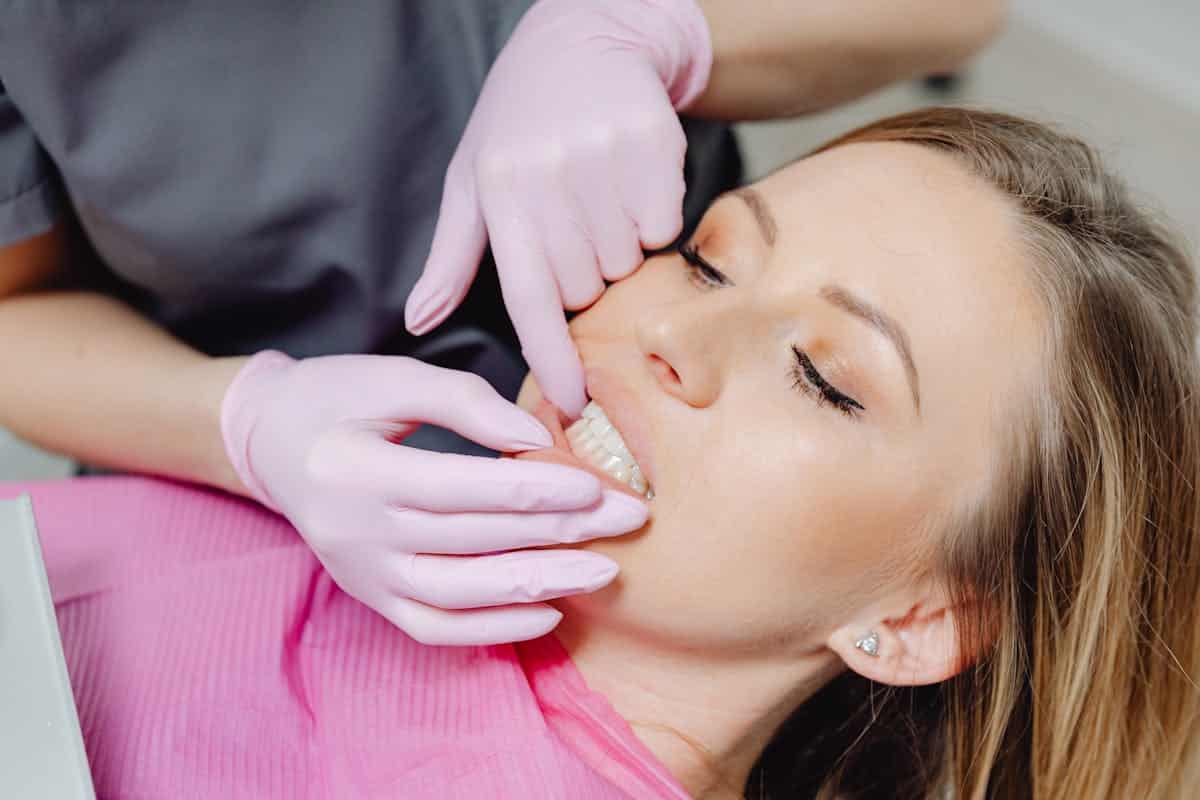Table of Contents
We all want to uncover our best smile, one we can show off with confidence. The problem is that some of the most enjoyable things in life (hello coffee and red wine) aren’t so great for our teeth.
“Teeth whitening has become one of the most frequently requested dental procedures. There’s a growing range of teeth whitening solutions available. One option is at-home teeth whitening kits. However, it’s essential to do your research,” says Dr Jaskaran Kaur, practice owner and dentist in Potts Point.
Considering whitening your teeth at home? It’s important to find out what differentiates one teeth whitening kit from another, are the ingredients safe, and what results you can expect. Ready to find out everything you need to know to choose the right option for you? Here’s the lowdown on at-home teeth whitening.
How Do Teeth Whitening Kits Work?
“Different teeth-whitening kits work in different ways. Yet, most teeth whitening solutions use an active bleaching ingredient. The most common bleaching agents used by dentists are hydrogen peroxide and carbamide peroxide. At our dental practice in Potts Point, we offer Zoom Professional Whitening, which uses a hydrogen-peroxide gel,” says Dr Kaur.
Store-bought teeth-whitening kits use lower-grade bleaching ingredients like sodium bicarbonate (baking soda) and sodium chlorite. If you do find a whitening kit, either online or in the supermarket, that contains hydrogen peroxide it’s likely that it’ll be low strength. There are regulations limiting the percentage of active ingredients used in non-professional teeth whitening products.
The bleaching ingredients penetrate the enamel of the teeth and react with the molecules that cause tooth discoloration. Over time and with continuous use for a certain period of time, the teeth become lighter and whiter.
Are At-Home Whitening Kits Effective?
The results are dependent on the type of whitening kit you choose, store bought or professional. An at-home teeth whitening kit provided by your dentist will include higher-strength bleaching agent and custom-made trays. This ensures the professional-grade bleaching solution reaches every tooth for the best result. With professional teeth whitening, it’s possible to safely and effectively lighten your teeth by up to eight shades.
This doesn’t mean that store-bought whitening kits don’t work, but they’re not as effective as a professional kit. Typically, they will whiten your teeth by just a couple of shades.
What are the Different Types of Teeth Whitening Options?
From stick-on strips and pens to LED lights and trays, here’s a rundown on at-home teeth whitening solutions.
Teeth Whitening Trays
Teeth whitening trays are a popular choice. The trays are filled with bleaching gel and placed over the top and bottom teeth (a bit like a mouthguard) for a specified length of time. If you opt for whitening trays from your dentist, they’ll be custom-made to fit your smile. You’ll also get a professional-grade bleaching solution.
Store-bought whitening kits contain a one-size-fits-all tray or a DIY moldable tray (soften it with boiling water before moulding it to your teeth). The shape isn’t going to be as good as a custom-made tray, which may result in uneven whitening.
No matter what option you choose, professional or store-bought, follow the instructions carefully to avoid gum irritation and tooth damage.
LED Teeth Whitening Kits
These teeth whitening kits use LED light to activate the bleaching gel and break down the stains on your teeth. LED teeth whitening technology has become quite popular on social media. Be aware, at-home kits don’t offer the same level of protection as in-chair LED whitening.
Teeth Whitening Pens
Whitening pens look like a regular pen, except they’re filled with bleaching gel. You brush the whitening agent over the front surface of your teeth. Initially, your teeth may look a little whiter, but whitening pens aren’t well known for noticeable or lasting results. That said, they may be useful for touch-ups and maintenance.
Teeth Whitening Strips
Teeth whitening strips are thin pieces of flexible plastic coated on one side with low concentration bleaching gel. The strips are applied directly onto the teeth. Typically, whitening strips are worn once or twice a day for 30 minutes at a time for up to two weeks. However, be sure to follow the instructions, as these may vary between brands.
Unlike pens, teeth whitening strips give your teeth prolonged exposure to the whitening solution. However, it’s important to ensure the strips don’t come into contact with your gums. This can cause irritation. Don’t leave the strips on for longer than recommended either, as this may damage the enamel.
What are the Risks of Home Teeth Whitening Kits
Having a bright, white smile is both appealing and attractive. But before you rush out to buy a teeth whitening kit, consider the potential risks…
- Tooth sensitivity
- Mild gum irritation
- Oral burns or blisters
- Allergic reaction to the bleaching solution
Most of the risks are directly related to the concentration of the bleaching ingredient and the duration of the treatment. For the best and safest results, chat with your dentist before embarking on your quest for a brighter, whiter smile. Your dentist will assess your teeth and gums and enquire about your desired results to help you find the best teeth whitening solution for you.


